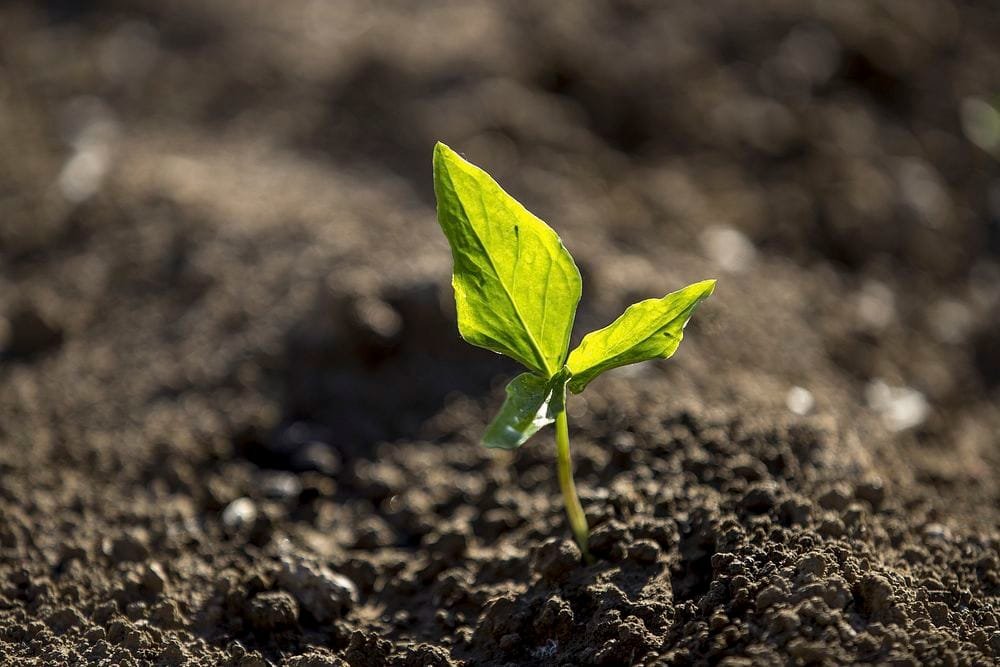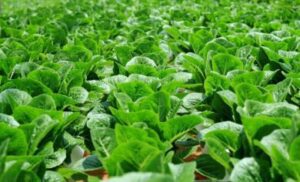Last updated on April 23, 2025
Organic gardening changed my life. A few years ago, when I first planted a few tomato seeds in my backyard, I had no idea how rewarding it would be. Not only did I save money, but I also ensured my family ate fresh, chemical-free produce. If you’re ready to grow your organic vegetables in Nigeria, I’m here to guide you every step of the way.
I’ll be honest with you—starting an organic vegetable garden wasn’t always on my radar. But a few years ago, when the rising cost of fresh produce collided with my growing awareness of the benefits of organic eating, I decided to give it a shot. Trust me, it’s one of the most rewarding decisions I’ve ever made.
In this guide, I’ll share practical, step-by-step advice drawn from my personal experience (and a few mistakes along the way!) to help you start your organic vegetable garden in Nigeria. Whether you have a tiny backyard or a sprawling compound, you can create a thriving garden that puts fresh, chemical-free vegetables on your plate.
Why You Should Start Growing Organic Vegetables
Let’s start with why organic gardening is such a game-changer.
1. Health Benefits
Organic vegetables are free from synthetic pesticides, herbicides, and fertilizers. This means cleaner, more nutritious produce for you and your family. Studies have shown that organically grown food contains higher levels of antioxidants and fewer harmful residues.
2. Cost Savings
With food prices rising, having your garden can significantly cut grocery bills. For example, a small tomato plant can yield kilograms of fruit over its lifetime—saving you thousands of naira annually.
3. Eco-Friendly Living
Organic gardening helps conserve the environment by improving soil health, reducing water usage, and promoting biodiversity.
4. Mental Wellness
Gardening is therapeutic. There’s something deeply satisfying about planting a seed, nurturing it, and watching it grow.

More:
View public domain image source here
My Journey: How I Started Growing Organic Vegetables
I started with the basics—just a few tomato plants and leafy greens in my backyard. I made mistakes, like overwatering and neglecting soil quality, but I learned along the way. The joy of plucking fresh, homegrown veggies quickly outweighed the initial struggles.
Here’s everything I wish I knew when I started:
Step 1: Choosing the Perfect Location
The first step to success in organic gardening is selecting the right location. This can make or break your efforts.
Factors to Consider
- Sunlight: Vegetables thrive on sunlight. Most crops need 6–8 hours of direct sunlight daily.
- Accessibility: Choose a spot close to your home for easy access to water and tools.
- Drainage: Avoid areas prone to flooding. Vegetables need well-drained soil to grow effectively.
What I Did
When I started, I underestimated the importance of sunlight. My first attempt involved planting under a tree—it was a disaster. Once I moved my garden to a sunnier spot, everything flourished.
Pro Tip: If you’re short on space, consider container gardening. You can grow vegetables in pots, buckets, or even old basins on your balcony.
Step 2: Preparing the Soil
Healthy soil is the foundation of a thriving organic garden. Think of it as the engine that powers plant growth.
How to Test Your Soil
Before planting, test your soil’s pH and fertility. A simple test kit from an agricultural store will tell you if your soil is acidic, neutral, or alkaline. Most vegetables prefer a pH of 6 to 7.
Improving Soil Quality
- Composting: Make your compost using kitchen scraps, grass clippings, and dried leaves. Compost enriches the soil with nutrients and improves its texture.
- Manure: I often use poultry droppings and cow dung, which are rich in nitrogen and phosphorus. Make sure they are well-rotted before applying them to avoid burning the plants.
- Crop Rotation: Avoid planting the same crops in the same spot year after year. This prevents soil depletion and reduces pest problems.
Pro Tip: If your soil is sandy, mix in organic matter like compost or coconut coir to retain moisture and nutrients.
Step 3: Choosing the Right Vegetables
Not all vegetables thrive in every environment. Selecting the right crops for Nigeria’s climate is crucial.
Beginner-Friendly Vegetables
- Tomatoes: They grow well in warm climates and require minimal care.
- Ugu (Fluted Pumpkin): A popular Nigerian vegetable rich in nutrients.
- Okra: Fast-growing and drought-resistant.
- Spinach (Efo Tete): Perfect for small gardens and grows quickly.
How to Choose
Consider these factors when selecting your vegetables:
- Climate Suitability: For instance, vegetables like lettuce struggle in Nigeria’s dry season without proper irrigation.
- Family Preference: Grow what your family enjoys eating to avoid waste.
- Space: Crops like maize require more space, while leafy greens can be grown in tight areas.
Pro Tip: If you’re unsure, visit a local market to see what’s in season. Seasonal vegetables usually grow best in your area.
Step 4: Planting Your Seeds
Planting is where the magic begins! But it requires attention to detail to ensure a bountiful harvest.
Steps to Follow
- Start with Seedlings: Instead of planting seeds directly into the soil, grow them in seed trays or small pots. This gives them a better chance of survival.
- Transplant Carefully: When your seedlings have 4–6 true leaves, move them to your garden or larger containers. Be gentle to avoid damaging the roots.
- Spacing: Always follow the recommended spacing on seed packets. Overcrowding leads to stunted growth and pest infestations.
Pro Tip: Plant marigolds or basil alongside your vegetables to deter pests naturally.
Step 5: Watering Techniques
Watering seems straightforward, but getting it right is critical for your garden’s success.

How Much Water Do Vegetables Need?
Most vegetables need about 1 inch of water per week, including rainfall.
Tips for Efficient Watering
- Morning Watering: Always water in the early morning. This allows the plants to absorb moisture before the sun gets too hot.
- Avoid Overwatering: Too much water can suffocate plant roots and lead to rot. Check the soil—if it feels moist 2 inches below the surface, you can skip watering.
- Drip Irrigation: If you have a large garden, invest in a drip irrigation system to conserve water and ensure even distribution.
Pro Tip: Mulch around your plants to retain soil moisture and reduce the need for frequent watering.
Step 6: Organic Pest and Disease Management
Pests are every gardener’s nightmare, but you don’t need chemicals to keep them at bay.
Natural Pest Control Methods
- Neem Oil Spray: This is my go-to solution for aphids and whiteflies. Mix neem oil with water and spray directly on affected plants.
- Garlic and Chili Spray: A homemade remedy to deter caterpillars and beetles.
- Companion Planting: Plant pest-repelling crops like basil, mint, or onions near vulnerable vegetables.
Preventing Diseases
- Rotate Crops: Avoid planting the same vegetable in the same spot repeatedly.
- Proper Spacing: Overcrowded plants are more prone to fungal infections.
- Clean Tools: Always sanitize gardening tools to prevent the spread of disease.
Pro Tip: Inspect your garden regularly. The sooner you spot a pest or disease, the easier it is to control.
Step 7: Harvesting and Storage
This is the most exciting part—reaping the fruits (and vegetables) of your labor!

When to Harvest
- Tomatoes: Pick when they’re firm and fully colored.
- Okra: Harvest while the pods are tender, about 3–4 inches long.
- Leafy Greens: Snip leaves as needed, starting with the outer ones.
How to Store Your Produce
- Tomatoes: Keep them at room temperature; refrigeration can reduce flavor.
- Leafy Greens: Wrap in a damp cloth and store in the fridge.
- Root Vegetables: Store in a cool, dark place to prolong freshness.
Pro Tip: Freeze excess vegetables to use later. For instance, you can blanch and freeze spinach for soups and stews.
Crop-Specific Care
Every vegetable has its quirks, and understanding their unique needs is essential for a thriving garden.
Tomatoes
Tomatoes are a Nigerian favorite, and with good reason—they’re versatile and relatively easy to grow.
- Planting Tips: Choose disease-resistant varieties like Roma or UC82. Plant seedlings deep, burying two-thirds of the stem to encourage strong root growth.
- Support System: Stake or cage your tomato plants early to prevent sprawling and keep the fruits off the ground.
- Fertilization: Use a balanced organic fertilizer when planting and switch to one high in potassium and phosphorus once flowering begins.
Common Issue: Blossom-end rot. Prevent it by ensuring consistent watering and adequate calcium in the soil.
Ugu (Fluted Pumpkin)
Ugu is a staple in Nigerian cuisine, prized for its nutrient-dense leaves.
- Planting Tips: Directly sow seeds in moist, well-drained soil. Ugu thrives in rich, loamy soil with good organic matter.
- Trellising: Provide vertical support for the vines to improve air circulation and ease harvesting.
- Maintenance: Prune regularly to encourage new leaf growth and avoid overcrowding.
Pro Tip: Water consistently but avoid waterlogging to prevent root rot.
Okra
Okra is heat-tolerant and ideal for Nigeria’s climate.
- Planting Tips: Soak seeds in warm water overnight before planting to improve germination.
- Spacing: Plant seeds 1 inch deep, spaced 12–18 inches apart.
- Harvesting: Pick pods while they’re tender, usually 3–4 inches long, to prevent them from becoming fibrous.
Common Issue: Aphids. Combat them with neem oil spray or introduce natural predators like ladybugs.
Spinach (Efo Tete)
Spinach grows quickly and is perfect for beginners.
- Planting Tips: Sow seeds directly into the soil, about ½ inch deep.
- Watering: Keep the soil consistently moist but not soggy.
- Harvesting: Snip leaves as needed, starting with the outer ones, to keep the plant producing.
Pro Tip: Mulch around spinach plants to keep the soil cool and moist, especially during Nigeria’s dry season.
Advanced Soil Amendment Techniques
Healthy soil is a gardener’s best friend. Let’s explore advanced ways to enrich your soil for long-term productivity.
Composting for Supercharged Soil
Making high-quality compost isn’t just about piling up kitchen scraps—it’s about balance.
- Green Materials: Add nitrogen-rich materials like vegetable peels, coffee grounds, and fresh grass clippings.
- Brown Materials: Balance this with carbon-rich items like dried leaves, shredded paper, and sawdust.
- Aeration: Turn your compost every 1–2 weeks to provide oxygen and speed up decomposition.
- Moisture: Keep the pile damp but not waterlogged—think of the consistency of a wrung-out sponge.
Pro Tip: Sprinkle a handful of soil into your compost pile to introduce beneficial microbes.
Biochar: The Ancient Soil Booster
Biochar is a carbon-rich material made by burning organic matter in a low-oxygen environment.
- Benefits: It improves soil structure, retains nutrients, and boosts microbial activity.
- How to Use: Mix biochar with compost or manure before adding it to your garden to activate its full potential.
Cover Crops for Soil Health
Cover crops like cowpeas or clover protect your soil during off-seasons.
- Benefits: They prevent erosion, improve soil fertility, and suppress weeds.
- When to Plant: Sow them at the end of the growing season or during periods of fallow.
- How to Use: Before planting your main crops, till the cover crop into the soil as green manure.
Pro Tip: Use nitrogen-fixing plants like legumes to naturally enrich your soil.
Maximizing Space with Vertical Gardening
If you’re working with limited space, vertical gardening is your best friend! It’s a smart way to maximize every square inch of your garden while adding a visual appeal.
Why Vertical Gardening?
Vertical gardening isn’t just for urban dwellers; it’s for anyone who wants to grow more in less space. By growing upwards, you:
- Increase yield per square foot.
- Improve air circulation, reducing the risk of diseases.
- Make harvesting easier by keeping produce within arm’s reach.
How to Set Up a Vertical Garden
- Choose Vertical-Friendly Crops:
Crops like tomatoes, cucumbers, beans, and peas are natural climbers and do well with vertical support. Leafy greens like lettuce and herbs can thrive in tiered planters.
- Install Sturdy Supports:
- Trellises: Ideal for climbing plants like cucumbers and peas.
- Arbors or Pergolas: Great for larger vines like fluted pumpkin (Ugu).
- Hanging Planters: Perfect for strawberries or small herbs.
- Wall Planters: Use recycled pallets or wall-mounted pots for herbs and flowers.
- Use Smart Irrigation:
Install a drip irrigation system to ensure all levels of your vertical garden receive adequate water.
- Rotate and Mix:
Mix short and tall plants to maximize sunlight exposure and keep pests confused.
Pro Tip for Vertical Success
Train your plants early by gently tying them to supports with soft twine or cloth strips. Avoid harsh materials that could damage stems.
Common Mistakes Beginners Make
Every gardener makes mistakes, but knowing the common ones will help you avoid unnecessary headaches.
1. Neglecting Soil Preparation
Skipping soil testing or amending can lead to poor plant growth. Always enrich your soil with compost and test pH levels to match your crops’ needs.
2. Overcrowding Plants
Planting too closely can lead to competition for nutrients, poor air circulation, and increased disease risk. Always follow spacing guidelines for each crop.
3. Inconsistent Watering
Both under-watering and over-watering can stress your plants. Use mulch to retain moisture and water deeply but infrequently.
4. Ignoring Crop Rotation
Planting the same crops in the same spot each season depletes nutrients and invites pests. Rotate your crops annually to maintain soil health.
5. Overusing Organic Fertilizers
While organic fertilizers are great, using too much can lead to nutrient imbalances. Always follow recommended application rates.
Pro Tip: Keep a gardening journal to track what works and what doesn’t. This will help you refine your techniques over time.
Success Stories and Lessons Learned
Hearing about others’ successes can be incredibly motivating. Here are a couple of inspiring stories from Nigerian gardeners.
Grace’s Balcony Bounty
Grace lives in Lagos and turned her tiny balcony into a thriving vertical garden. She grew tomatoes, peppers, and herbs using hanging planters and recycled bottles.
Her Lesson: “I learned that consistent watering and choosing the right crops for my climate made all the difference.”
Ahmed’s Community Impact
Ahmed started a community garden in Kano, teaching neighbors to grow organic vegetables. He focused on crops like spinach and okra, which are fast-growing and nutrient-rich.
His Lesson: “Gardening is about patience. Sometimes pests or weather setbacks happen, but staying committed pays off.”
FAQs – How to Grow Organic Vegetables in Nigeria
1. What vegetables grow best in Nigeria?
Crops like tomatoes, peppers, okra, spinach, and fluted pumpkins thrive in Nigeria’s climate due to their heat tolerance.
2. How do I make organic compost?
Combine green materials (e.g., vegetable scraps, grass clippings) with brown materials (e.g., dried leaves, paper) in a 2:1 ratio. Keep the pile moist and turn it regularly for aeration.
3. How can I control pests organically?
Use natural solutions like neem oil, garlic spray, or diatomaceous earth. Attract beneficial insects like ladybugs to keep pests in check.
4. How often should I water my garden?
Water deeply 2–3 times a week, depending on rainfall and soil type. Use mulch to retain moisture and reduce evaporation.
5. Can I grow vegetables in containers?
Absolutely! Use pots with good drainage and rich, loamy soil. Crops like tomatoes, peppers, and herbs do particularly well in containers.
6. How do I know when my soil is healthy?
Healthy soil is crumbly, dark, and rich in organic matter. A soil test can reveal pH and nutrient levels to guide amendments.
7. What’s the best way to start as a beginner?
Start small with easy-to-grow crops like spinach, okra, or tomatoes. Focus on soil health and consistent care while learning from your garden’s progress.
Wrapping Up
Growing organic vegetables in Nigeria is more than just a hobby—it’s a lifestyle choice that benefits your health, wallet, and the planet. By applying these advanced strategies, you’ll not only grow abundant, healthy produce but also deepen your connection to nature.
Ready to start or upgrade your garden? Let me know how these tips worked for you in the comments—I’d love to hear about your journey!
If you’d like further expansions or need help with any specific challenges, I’m here to help. Just ask!
Reference Links:
Here are reference links to the materials used to inform the guide on How to Grow Organic Vegetables in Nigeria:
- Agriculture Nigeria – Comprehensive guide to starting an organic vegetable garden in Nigeria:
https://www.agriculturenigeria.com/a-comprehensive-guide-how-to-start-your-own-organic-vegetable-garden-in-nigeria/ - Nairaland – Tips for growing organic vegetables at home in Nigeria:
- Quora – Backyard organic vegetable gardening techniques:
https://www.quora.com/How-can-I-grow-organic-vegetables-in-my-backyard - Quora – Starting organic vegetable and fruit gardens:
https://www.quora.com/I-want-to-start-growing-organic-vegetables-fruits-at-my-home-What-should-I-start-with-and-how-I-am-from-Punjab - Farm Square – Insights on Backyard Farming in Nigeria:
https://farmsquare.ng/backyard-farming/ - AgriFarming – Guide to organic farming in Nigeria, crops, and challenges:
https://www.agrifarming.in/how-to-start-organic-farming-in-nigeria-crops-organic-vegetable-cultivation-setup-cost-and-challenges
These sources provide a mix of practical tips, crop-specific advice, and general insights into organic vegetable gardening in Nigeria.


